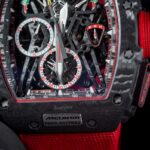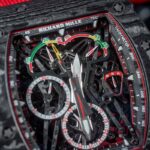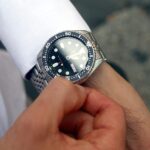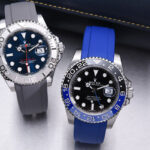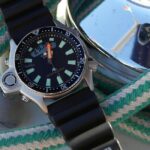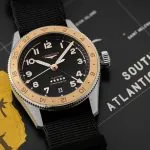I always wait for the SIHH to take place (and the SIHH 2019 especially) because I am curious to see the releases of this tiny high-tech manufacture that more resembles an aerospace company rather than a watch-making manufacturing company. What to expect from Richard Mille during its last SIHH after releasing authentic masterpieces like the Richard Mille RM 67–02 Automatic High Jump Mutaz Barshim, the Richard Mille RM 53–01 Tourbillon Pablo McDonough, the Richard Mille RM 11–03 Jean Todt 50th Anniversary or this Richard Mille RM 50–03 McLaren F1 Tourbillon Split Seconds Chronograph Ultralight?
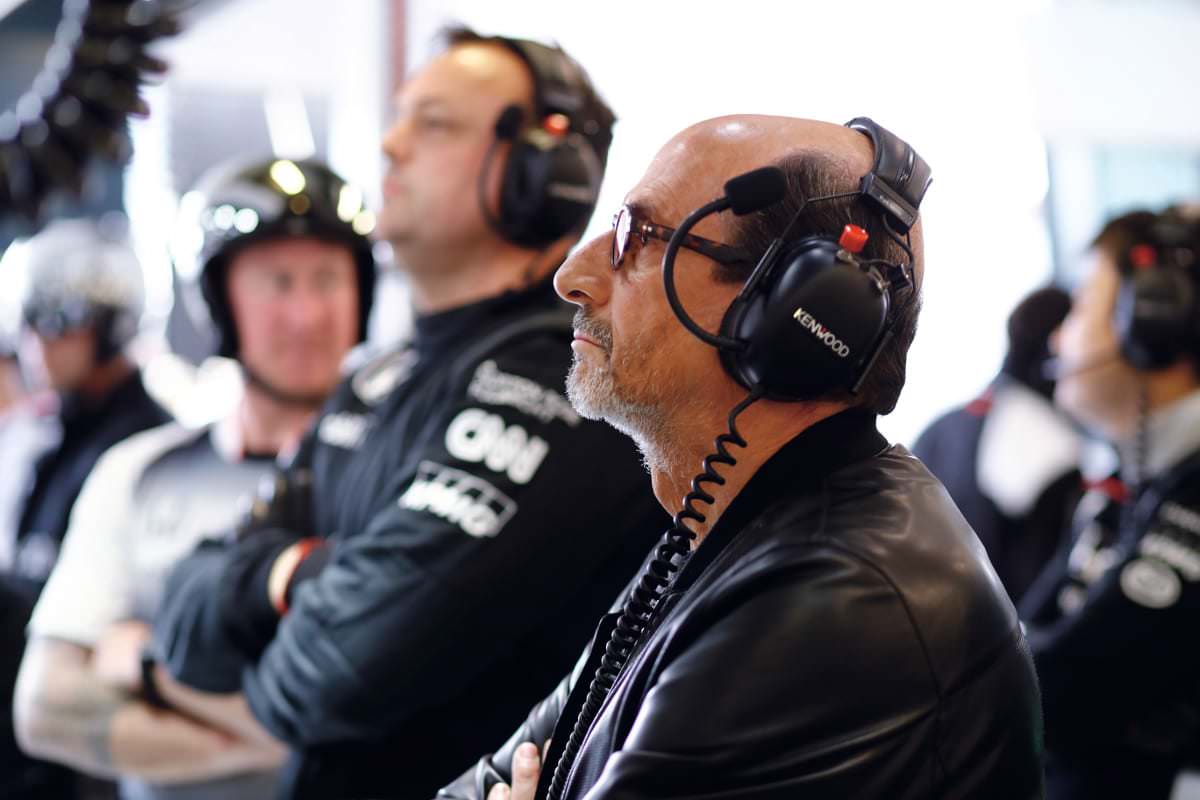
The manufacture that was funded with the motto “A racing machine on the wrist” in mind started two years ago a technical partnership with McLaren Automotive; a relationship that ideally started in 1966, when Richard first came to know the McLaren team while he was taking part in the Monaco Grand Prix together with his father. After crafting the only timepiece that could take part in a Formula 1 Grand Prix (worn by Felipe Massa) and withstand the hardships of a Pikes Peak (worn under the suit of the legendary Sebastian Loeb), Richard Mille decided to bring this strong tie with the world of car racing to a new level. In 1981, the McLaren team was the first team to introduce a single monocoque made of a carbon fibre composite with the McLaren MP4/1.
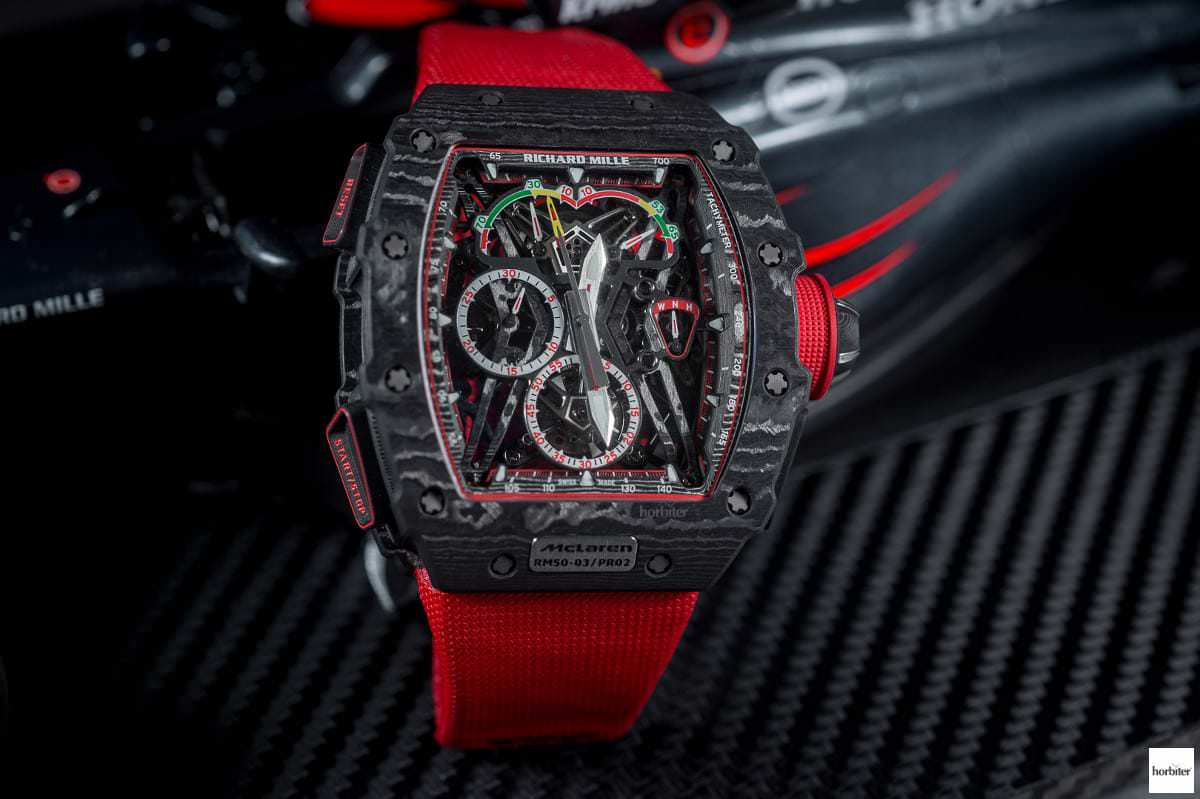 Richard Mille, who is extremely passionate about motorsport, started visiting the McLaren Technology Center to study all the processes that lead to the creation of a single-seater. His idea was to come up with something similar to a Formula 1 car as far as product lightness and combined performance were concerned; two necessary requirements when it comes to crafting a F1 car.
Richard Mille, who is extremely passionate about motorsport, started visiting the McLaren Technology Center to study all the processes that lead to the creation of a single-seater. His idea was to come up with something similar to a Formula 1 car as far as product lightness and combined performance were concerned; two necessary requirements when it comes to crafting a F1 car.
The lightest Double Chronograph Tourbillon ever produced
The Richard Mille RM 50-03 McLaren F1 Tourbillon Split Seconds Chronograph Ultralight only weighs 38 grams and its Tourbillon calibre with a split-second chronograph only weighs 7 grams, thus making this timepiece the lightest complicated watch in the world. How could he attain such an apparently impossible result?
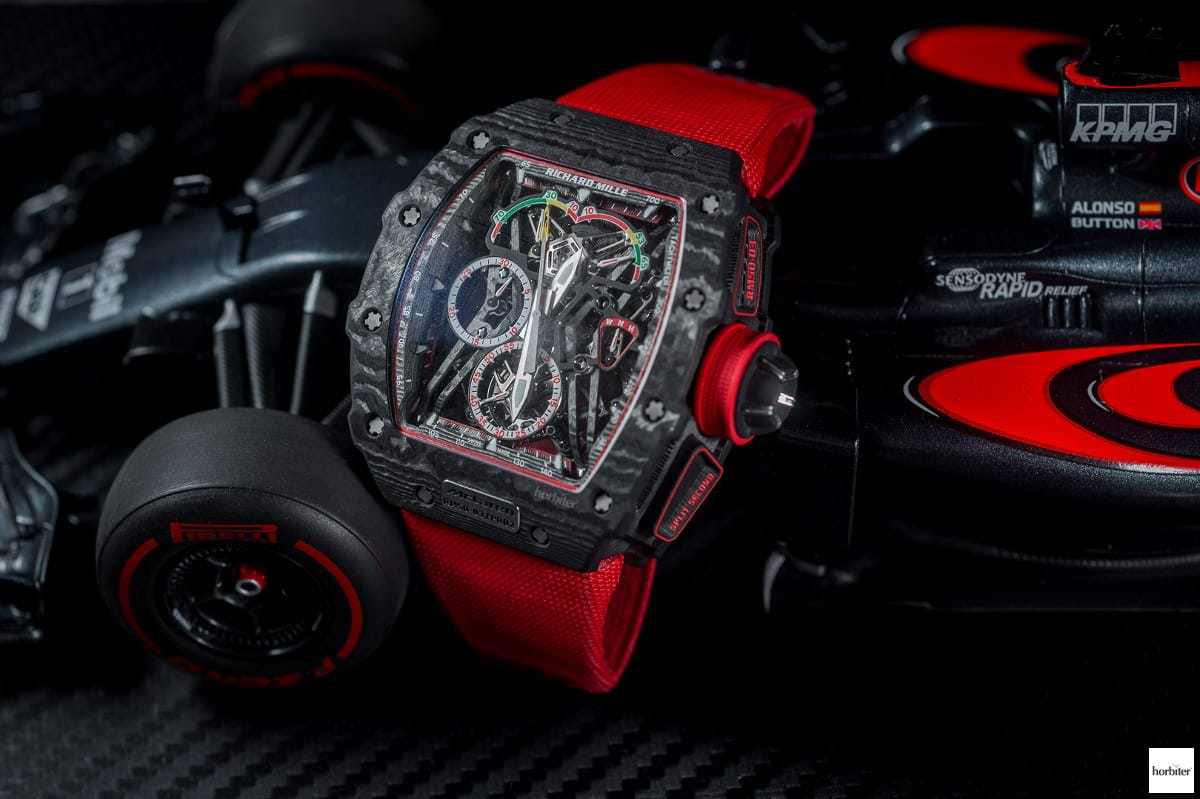 The creation of exceptional products is Richard Mille‘s mantra but to do so he can’t use those materials that, despite being quite advanced, are currently used in the world of watch-making. He had to come up with something completely new and, in my opinion, none of the currently available materials could help him achieve such an extraordinary result (at least for what concerns the performance that the brand requires its product to provide).
The creation of exceptional products is Richard Mille‘s mantra but to do so he can’t use those materials that, despite being quite advanced, are currently used in the world of watch-making. He had to come up with something completely new and, in my opinion, none of the currently available materials could help him achieve such an extraordinary result (at least for what concerns the performance that the brand requires its product to provide).
The answer was: Graphene
For his Richard Mille RM 50-03 McLaren F1 Tourbillon Split Seconds Chronograph Ultralight, the manufacturer chose graphene; a nanomaterial that is 6 times lighter than steel and 200 times more resistant too. Graphene is not available in nature but it can be found as a combined material with graphite (the material that is normally used inside pencils).
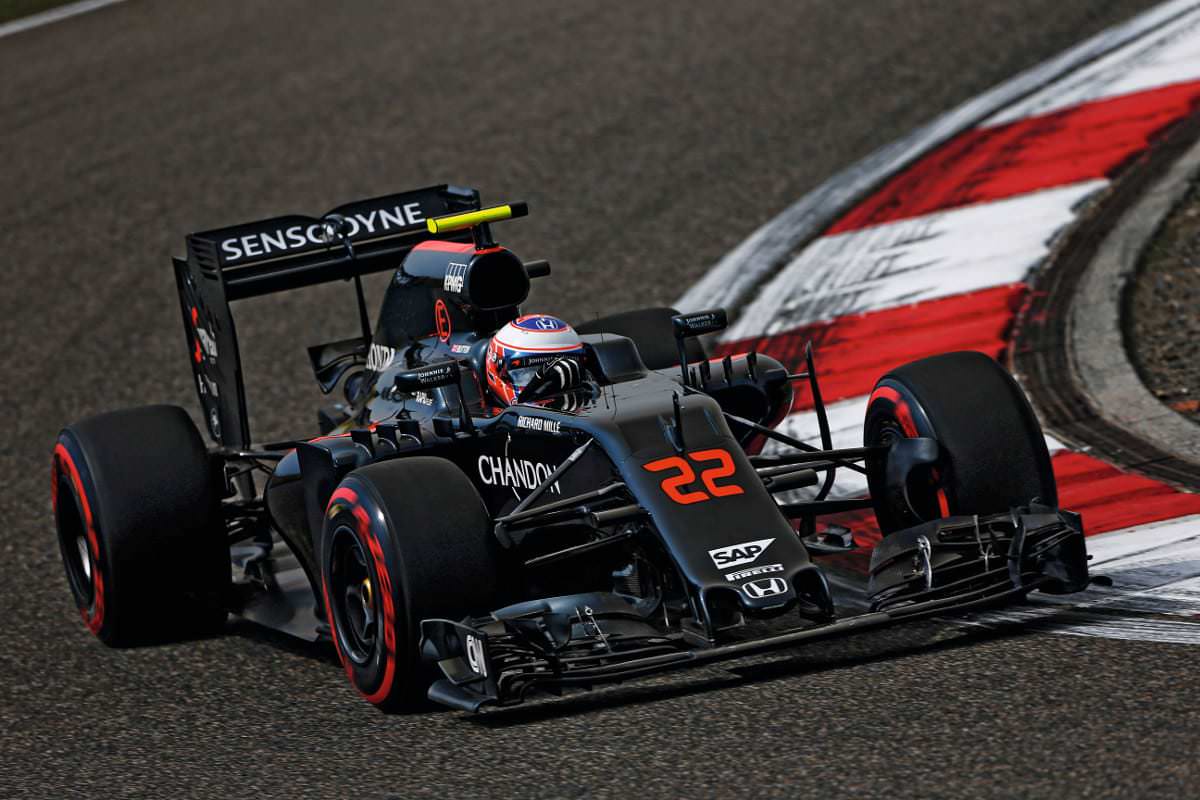 In 2004, two scientists from Manchester University managed to isolate 2D crystal graphene from graphite; crystals were as thick as an atom and the two scientists were awarded a Nobel prize for physics for this achievement. Because of its exceptional properties that also include an extraordinary conductivity, graphene represents one of the materials of the future in areas like aeronautics, biomedicine, wearable technologies manufacturing, and other applications that were unthinkable of until recent.
In 2004, two scientists from Manchester University managed to isolate 2D crystal graphene from graphite; crystals were as thick as an atom and the two scientists were awarded a Nobel prize for physics for this achievement. Because of its exceptional properties that also include an extraordinary conductivity, graphene represents one of the materials of the future in areas like aeronautics, biomedicine, wearable technologies manufacturing, and other applications that were unthinkable of until recent.
An exclusive partnership signed with McLaren Applied Technologies and the University of Manchester
Richard’s objective was to lower the density (and therefore the weight) of a carbon fibre composite, while increasing its resistance at the same time. He decided to insert graphene within the carbon case, therefore transforming the TPT Carbon into Graph TPT and, with the help of McLaren Applied Technologies and the University of Manchester, creating the first Graph TPT–made case in the world (an evolution of TPT Carbon).
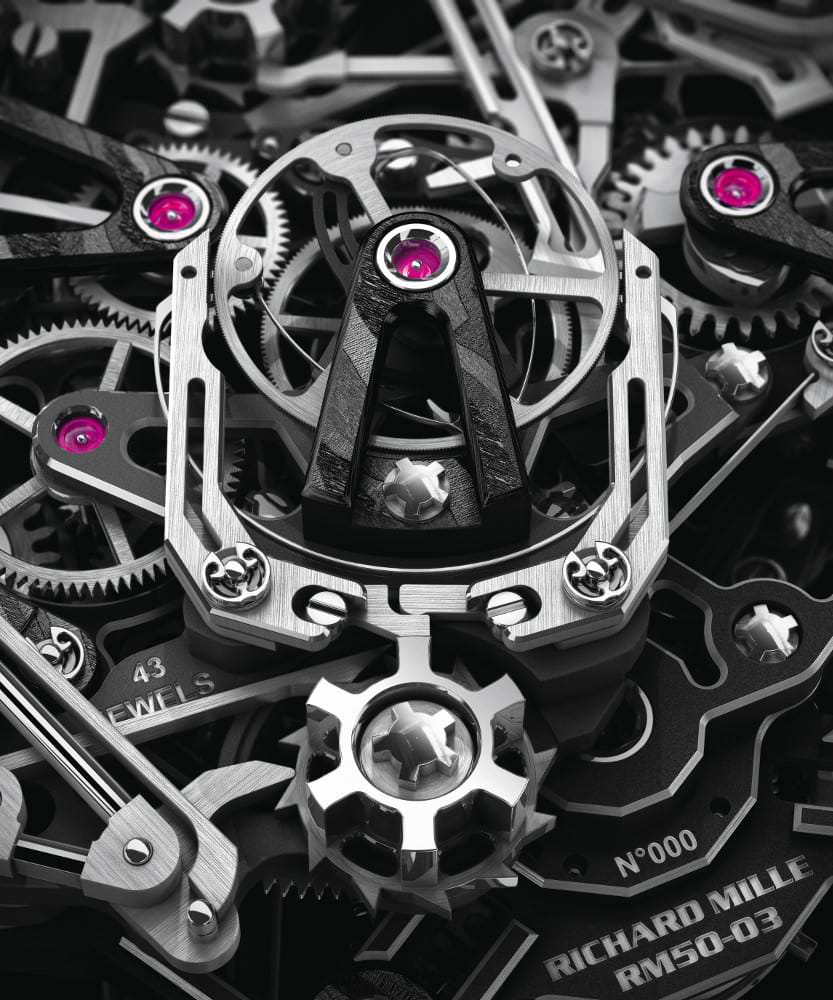 Because of the creation of the new composite, new manufacturing machines had to be created too; these allowed the manufacturing of 75 cases (the amount of Richard Mille RM 50-03 McLaren F1 Tourbillon Split Seconds Chronograph Ultralight timepieces produced at the time). Graphene is exceptionally helium-resistant too and that makes it likely that the next step of the manufacturer could be the crafting of a professional super-sealed diver’s watch.
Because of the creation of the new composite, new manufacturing machines had to be created too; these allowed the manufacturing of 75 cases (the amount of Richard Mille RM 50-03 McLaren F1 Tourbillon Split Seconds Chronograph Ultralight timepieces produced at the time). Graphene is exceptionally helium-resistant too and that makes it likely that the next step of the manufacturer could be the crafting of a professional super-sealed diver’s watch.
A 38 grams caliber that can withstand up to 5000g
In my opinion, the calibre of the Richard Mille RM 50-03 McLaren F1 Tourbillon Split Seconds Chronograph Ultralight represented an even bigger challenge than the crafting of the case itself, where, without oversimplifying the result obtained, the presence of partners and work methods have helped with the creation of the Graph TPT. Richard Mille crafted a calibre that weighs 7 grams only and that is made of Grade 5 Titanium on the plates and bridges and of TPT Carbon on some of the bridges of the chronograph section, the bridge of the barrel and the bridge of the tourbillon cage. The same material was also used to connect the movement to the case, thus eliminating every casing ring.
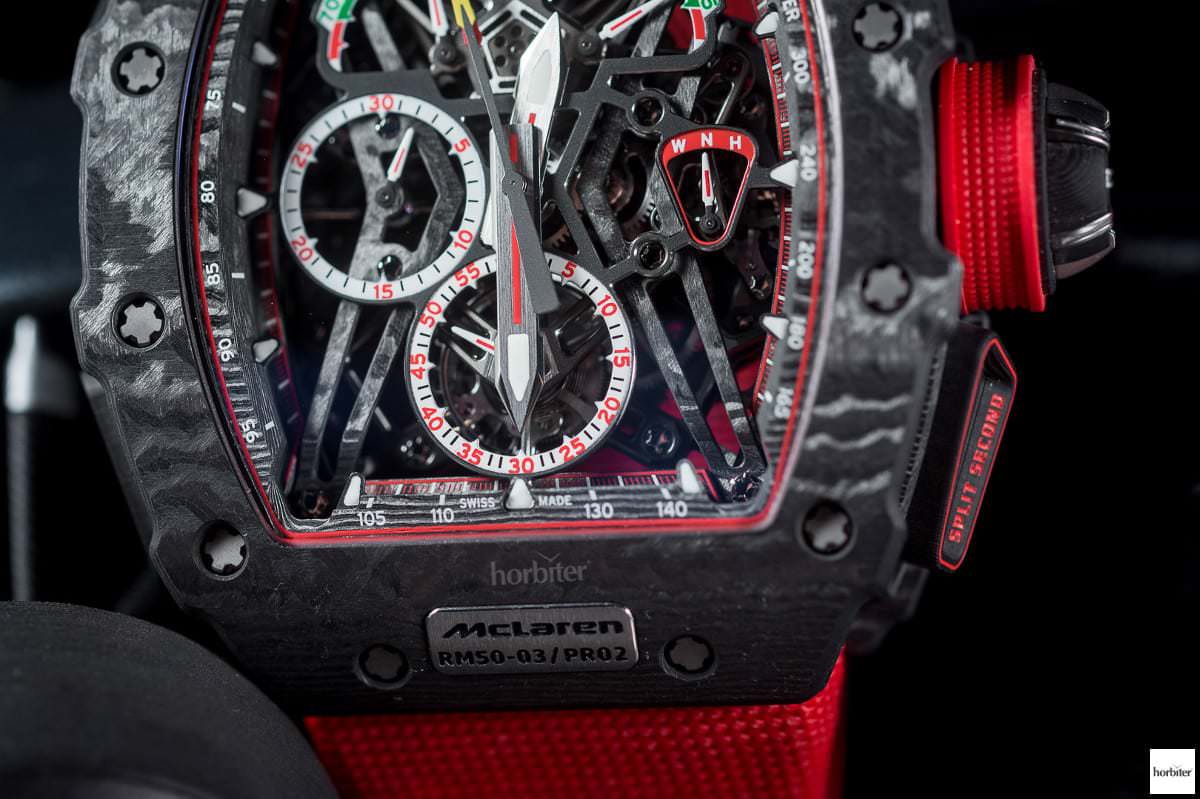 The final result was a timepiece that only weighs 38 grams and is equipped with a 7-grams calibre that can withstand accelerations up to a max acceleration of 5,000g (this figure could never be reached in a real life situation) as per lab testing. The work of fine engineering on the split-second-function achieved a 50% energy consumption saving (it is not specified anywhere what this figure refers to but I assume that it refers to the consumption of the current split-second-calibre). As per Richard Mille, thanks to a smart design of the profile of the 6-tooth-column-wheel, it is possible to achieve a perfect synchronism and the complete absence of any oscillatory movements during the start, stop and reset functions.
The final result was a timepiece that only weighs 38 grams and is equipped with a 7-grams calibre that can withstand accelerations up to a max acceleration of 5,000g (this figure could never be reached in a real life situation) as per lab testing. The work of fine engineering on the split-second-function achieved a 50% energy consumption saving (it is not specified anywhere what this figure refers to but I assume that it refers to the consumption of the current split-second-calibre). As per Richard Mille, thanks to a smart design of the profile of the 6-tooth-column-wheel, it is possible to achieve a perfect synchronism and the complete absence of any oscillatory movements during the start, stop and reset functions.
Renaud e Papi’s legacy
The stop button of the split-second-function is located at 4 o’clock and, shape-wise, it reminds us of the air vents’ shape that grace the brakes of the single-seater (the same can be said for the other two buttons also). On the list of the calibre’s features – the first time that I have ever read in a data sheet of a timepiece – the inertia moment of the balance-wheel is stated and so are more many features that would better suit a Formula 1 car rather than a watch. The “dinamo-metric crown” is a clear reference to the mechanics of a car, while the two indicators – the torque indicator on the top right hand side of the dial and the functions indicator located at the bottom – have been inherited as far as I remember from a patent by Renaud and Papi and they allow to monitor the tension applied to the winding spring (the ideal window is between 53dNmm and 65dNmm as indicated in green on the scale), and the winding function of the crown (W = winding), the time adjustment function (H = hour) or the date adjustment function (D = date).
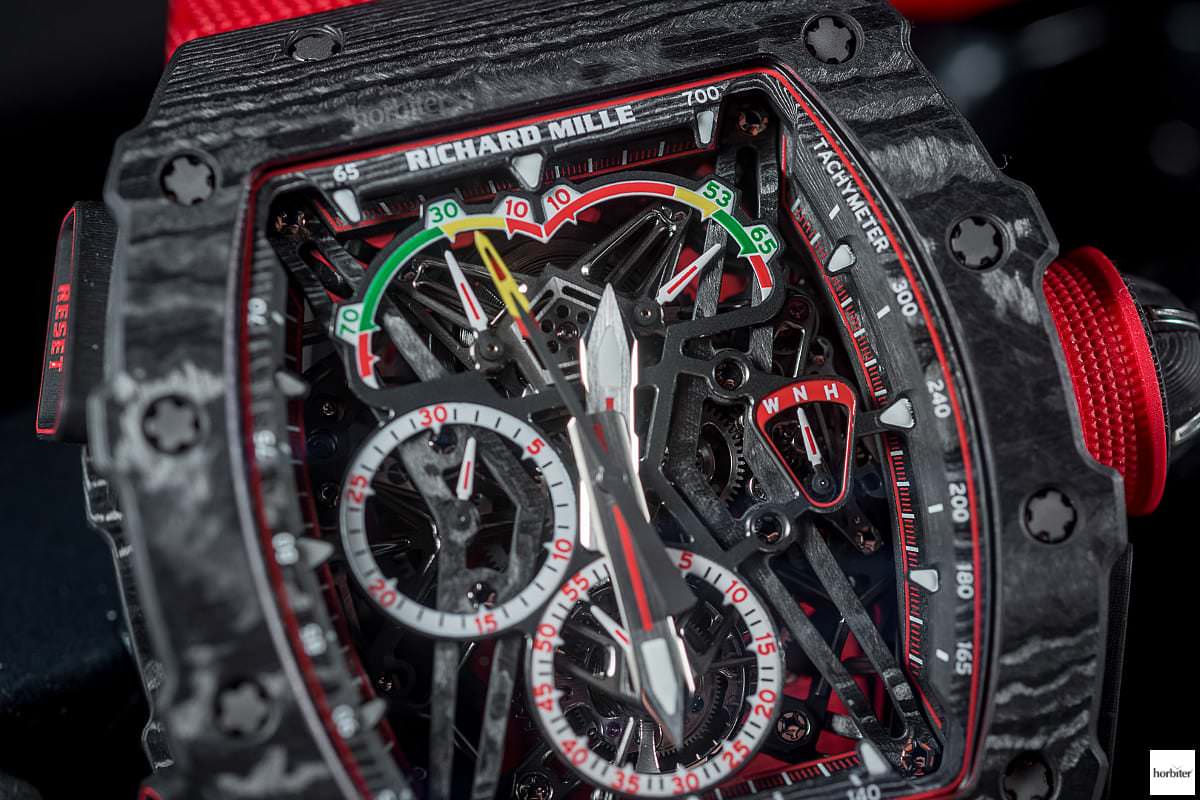 I could continue on with the Chronifer-made stem of the barrel or the involute profile of the barrel’s gears but truth is that the Richard Mille RM 50-03 McLaren F1 Tourbillon Split Seconds Chronograph Ultralight would make every single complicated watch pale and die of envy, in particular those complicated timepieces that try and sell an avant-garde and technology concept, simply because these are objectively less credible. This is not exclusively a hyper–watch, it is rather an experiment that involves science, physics, and mechanics.
I could continue on with the Chronifer-made stem of the barrel or the involute profile of the barrel’s gears but truth is that the Richard Mille RM 50-03 McLaren F1 Tourbillon Split Seconds Chronograph Ultralight would make every single complicated watch pale and die of envy, in particular those complicated timepieces that try and sell an avant-garde and technology concept, simply because these are objectively less credible. This is not exclusively a hyper–watch, it is rather an experiment that involves science, physics, and mechanics.
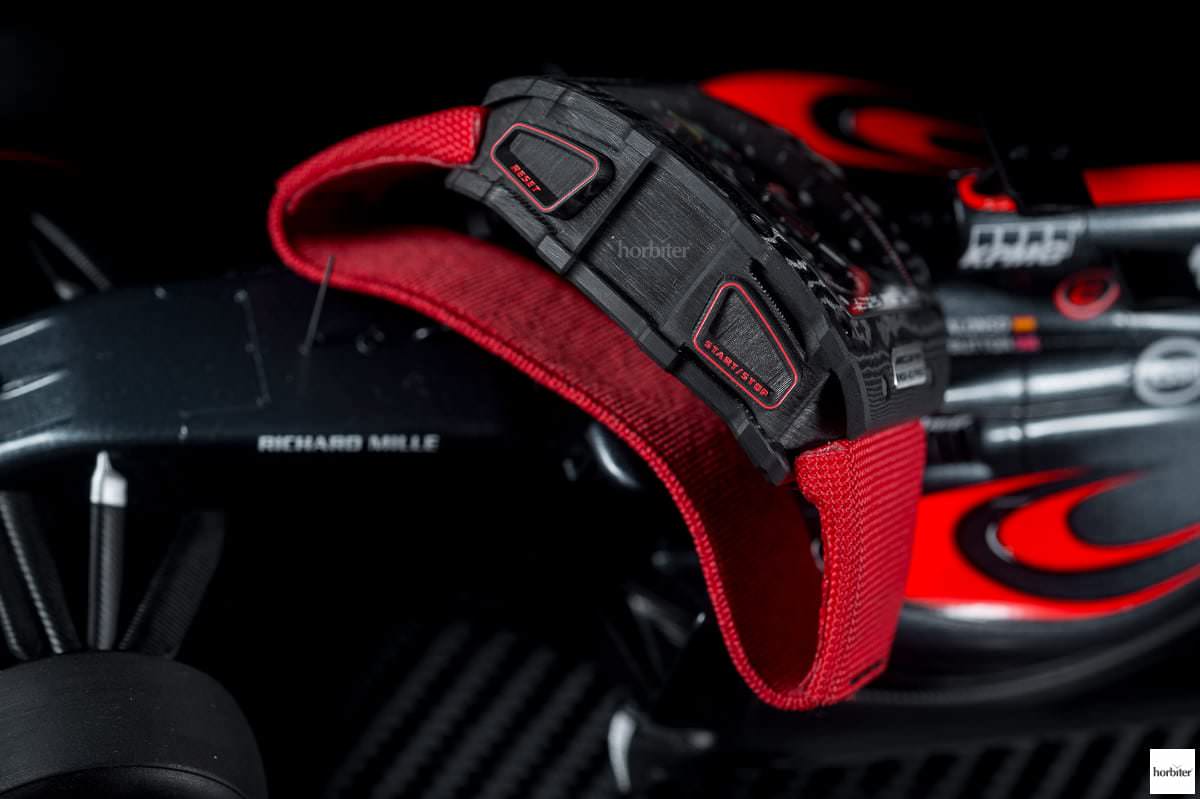 This timepiece is much more than that and the only possible comparison would be with another Richard Mille timepiece; the ACJ that was introduced in 2016 and that paved the way for these new timepieces. The Richard Mille RM 50-03 McLaren F1 Tourbillon Split Seconds Chronograph Ultralight, however, goes above it on every level. If this is the first result of a partnership that is expected last for 10 years, I can’t imagine what the future will bring. The retail price of the Richard Mille RM 50-03 McLaren F1 Tourbillon Split Seconds Chronograph Ultralight was 980,000 Swiss Francs, that is to say more than 1 million euro at the current rate. I believe the retail price was fair, the same can be said for the retail price of a McLaren P1 or of a Pagani Huayra BC, the difference being we are in front here of micro-engineering, whose results are far more difficult to achieve.
This timepiece is much more than that and the only possible comparison would be with another Richard Mille timepiece; the ACJ that was introduced in 2016 and that paved the way for these new timepieces. The Richard Mille RM 50-03 McLaren F1 Tourbillon Split Seconds Chronograph Ultralight, however, goes above it on every level. If this is the first result of a partnership that is expected last for 10 years, I can’t imagine what the future will bring. The retail price of the Richard Mille RM 50-03 McLaren F1 Tourbillon Split Seconds Chronograph Ultralight was 980,000 Swiss Francs, that is to say more than 1 million euro at the current rate. I believe the retail price was fair, the same can be said for the retail price of a McLaren P1 or of a Pagani Huayra BC, the difference being we are in front here of micro-engineering, whose results are far more difficult to achieve.
(Photo credit: Horbiter®)
Gaetano C @Horbiter®
@Gaetano Cimmino
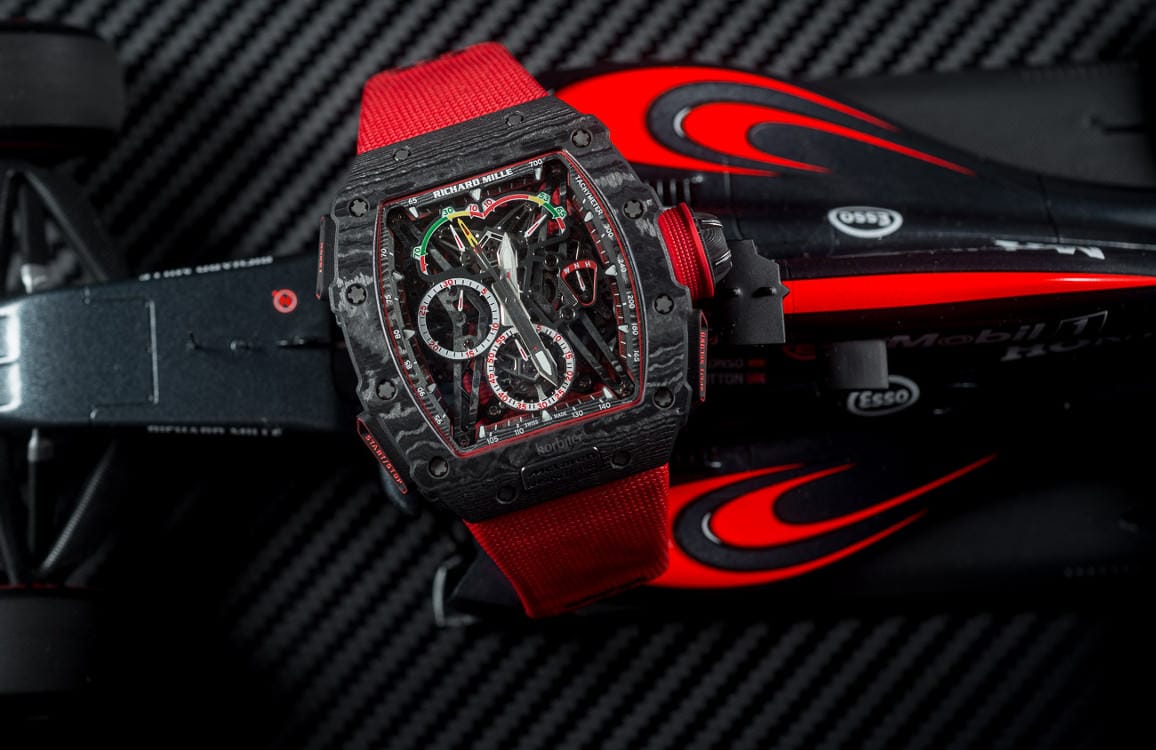

 Richard Mille, who is extremely passionate about motorsport, started visiting the McLaren Technology Center to study all the processes that lead to the creation of a single-seater. His idea was to come up with something similar to a Formula 1 car as far as product lightness and combined performance were concerned; two necessary requirements when it comes to crafting a F1 car.
Richard Mille, who is extremely passionate about motorsport, started visiting the McLaren Technology Center to study all the processes that lead to the creation of a single-seater. His idea was to come up with something similar to a Formula 1 car as far as product lightness and combined performance were concerned; two necessary requirements when it comes to crafting a F1 car. The creation of exceptional products is Richard Mille‘s mantra but to do so he can’t use those materials that, despite being quite advanced, are currently used in the world of watch-making. He had to come up with something completely new and, in my opinion, none of the currently available materials could help him achieve such an extraordinary result (at least for what concerns the performance that the brand requires its product to provide).
The creation of exceptional products is Richard Mille‘s mantra but to do so he can’t use those materials that, despite being quite advanced, are currently used in the world of watch-making. He had to come up with something completely new and, in my opinion, none of the currently available materials could help him achieve such an extraordinary result (at least for what concerns the performance that the brand requires its product to provide). In 2004, two scientists from Manchester University managed to isolate 2D crystal graphene from graphite; crystals were as thick as an atom and the two scientists were awarded a Nobel prize for physics for this achievement. Because of its exceptional properties that also include an extraordinary conductivity, graphene represents one of the materials of the future in areas like aeronautics, biomedicine, wearable technologies manufacturing, and other applications that were unthinkable of until recent.
In 2004, two scientists from Manchester University managed to isolate 2D crystal graphene from graphite; crystals were as thick as an atom and the two scientists were awarded a Nobel prize for physics for this achievement. Because of its exceptional properties that also include an extraordinary conductivity, graphene represents one of the materials of the future in areas like aeronautics, biomedicine, wearable technologies manufacturing, and other applications that were unthinkable of until recent. Because of the creation of the new composite, new manufacturing machines had to be created too; these allowed the manufacturing of 75 cases (the amount of Richard Mille RM 50-03 McLaren F1 Tourbillon Split Seconds
Because of the creation of the new composite, new manufacturing machines had to be created too; these allowed the manufacturing of 75 cases (the amount of Richard Mille RM 50-03 McLaren F1 Tourbillon Split Seconds  The final result was a timepiece that only weighs 38 grams and is equipped with a 7-grams
The final result was a timepiece that only weighs 38 grams and is equipped with a 7-grams  I could continue on with the Chronifer-made
I could continue on with the Chronifer-made  This timepiece is much more than that and the only possible comparison would be with another Richard Mille timepiece; the
This timepiece is much more than that and the only possible comparison would be with another Richard Mille timepiece; the 